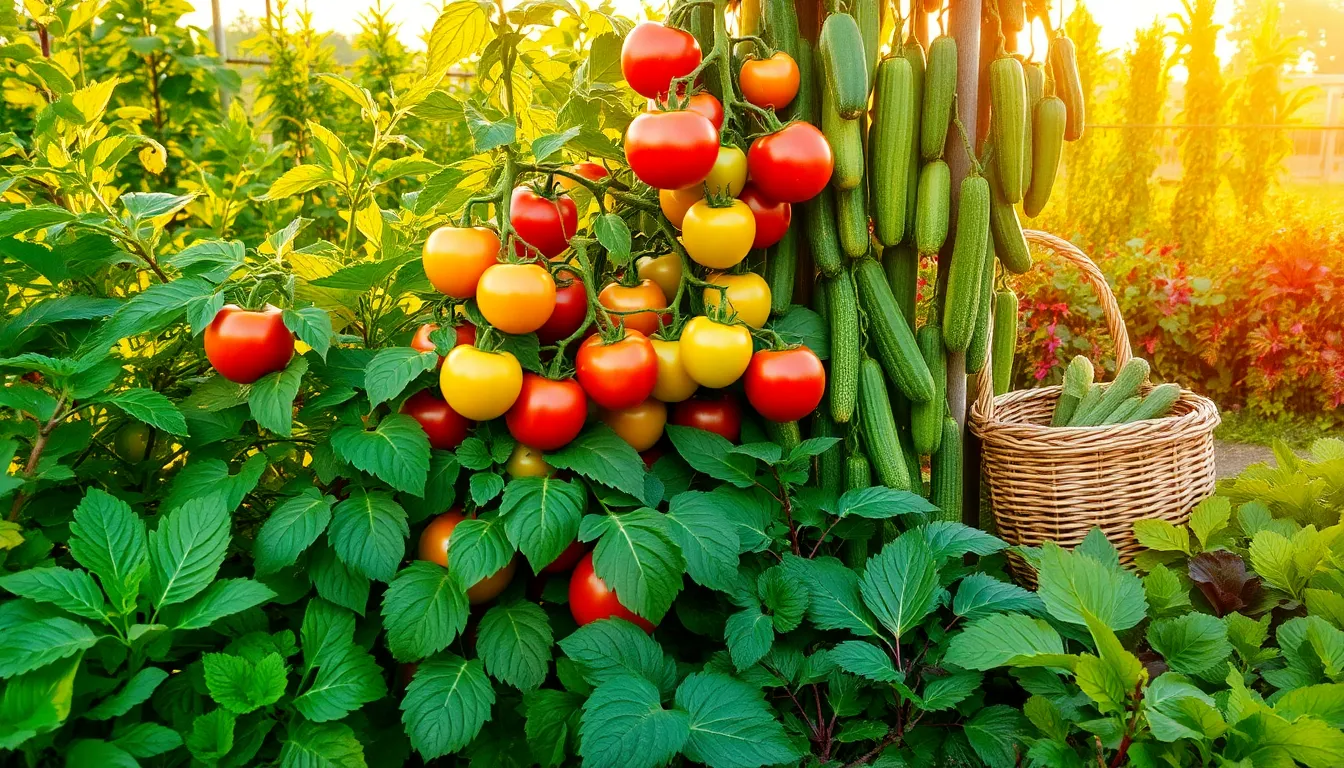There is an undeniable thrill in watching your vegetable garden flourish, each day revealing a new leaf, blossom, or the tantalizing hint of a budding harvest. For both beginners taking their first steps into the world of gardening and seasoned green thumbs, understanding the art and timing of harvesting is pivotal. Bringing your vegetables to the table at their peak ripeness not only rewards you with the freshest flavors but also ensures the continued growth and productivity of your garden.
Harvesting isn’t just about picking; it’s about timing, technique, and knowing your plants. In this article, we’ll explore why harvesting is crucial to your garden’s success and your kitchen’s delight. You’ll discover how harvesting at the right moment can enhance taste, texture, and nutritional value, and even prevent your plants from succumbing to pests and diseases. Whether you’re nurturing your first tomato plant or managing a sprawling vegetable patch, learning the nuances of harvesting will empower you to make the most of your gardening endeavors.
Imagine the satisfaction of plucking a sun-ripened tomato or a crisp cucumber, knowing it’s at its most flavorful. This guide will equip you with practical tips and insights that cater to all levels of gardening expertise, ensuring you feel confident and informed. By the end, you’ll not only appreciate the importance of harvesting but also be equipped with the knowledge to do it effectively, making your gardening experience both rewarding and bountiful.
Understanding Crop Maturity Signs
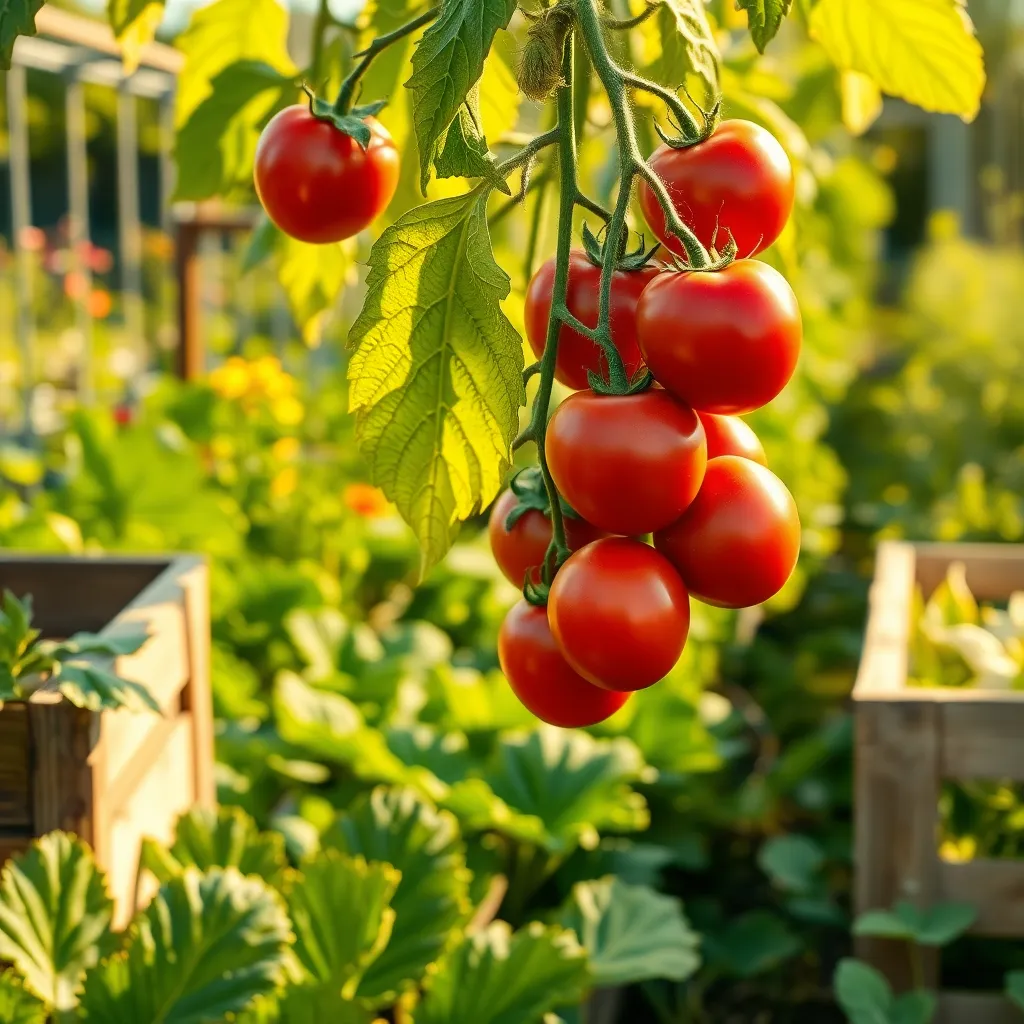
Recognizing when your vegetables are ready to harvest is crucial for obtaining the best flavor and nutritional value. **Each plant has its own signs of maturity**, and understanding these can significantly enhance your gardening success.
Firstly, observe the color changes in your crops, as many vegetables develop a deeper hue when ripe. **Tomatoes, for instance, should be harvested when they are fully red**, but still firm to the touch for the best taste.
In addition to color, **texture is another key indicator** of maturity. For example, cucumbers should be firm and smooth, and their size should be appropriate for the variety you are growing.
Beginner gardeners should also pay attention to the calendar, as it can provide a rough estimate of when to expect harvest readiness. **Most seed packets include a “days to maturity” count**, which is a helpful guide for timing your harvest.
Maximizing Nutrient Retention in Produce
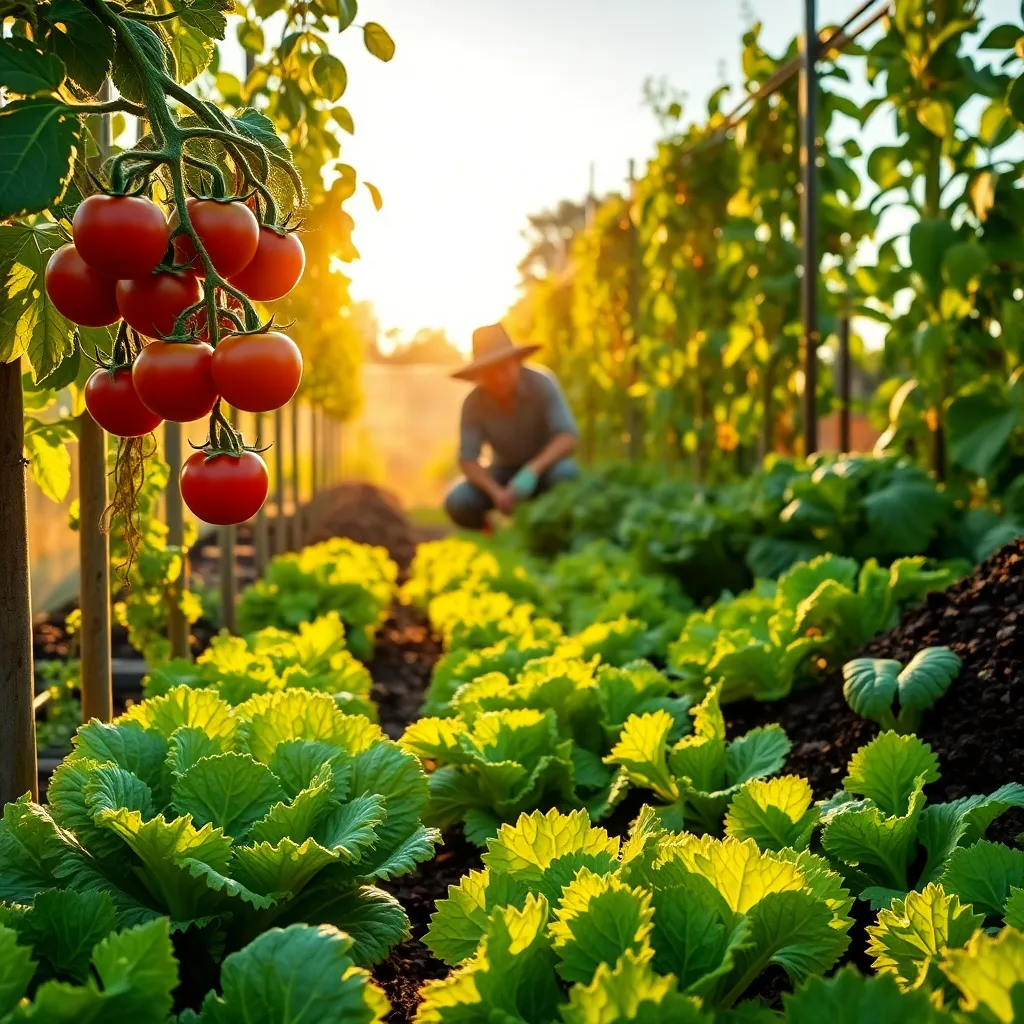
Properly timing your vegetable harvest is crucial for maximizing nutrient retention. Harvesting at the right moment ensures that your produce is at its peak in terms of both taste and nutritional value.
To maximize nutrient retention, harvest vegetables in the early morning when they are most hydrated. The cooler morning temperatures help preserve the delicate compounds that contribute to flavor and nutrition.
Storing your harvested produce correctly is just as important as when you pick it. For instance, leafy greens should be kept in a cool, moist environment, while root vegetables prefer a cool, dark place.
Use sharp, clean tools to harvest your vegetables, which minimizes damage to the plant and prevents the spread of disease. This practice not only helps the plant continue producing but also retains the quality of the harvested produce.
For more advanced gardeners, consider soil health as a way to boost nutrient content in your produce. Regularly test your soil and amend it with organic matter like compost to maintain a rich supply of nutrients.
Finally, practice crop rotation to prevent soil nutrient depletion and to keep your plants healthy. Rotating crops helps manage pests and diseases, ensuring that your harvests remain bountiful and nutrient-rich year after year.
Enhancing Flavor Through Timely Harvest
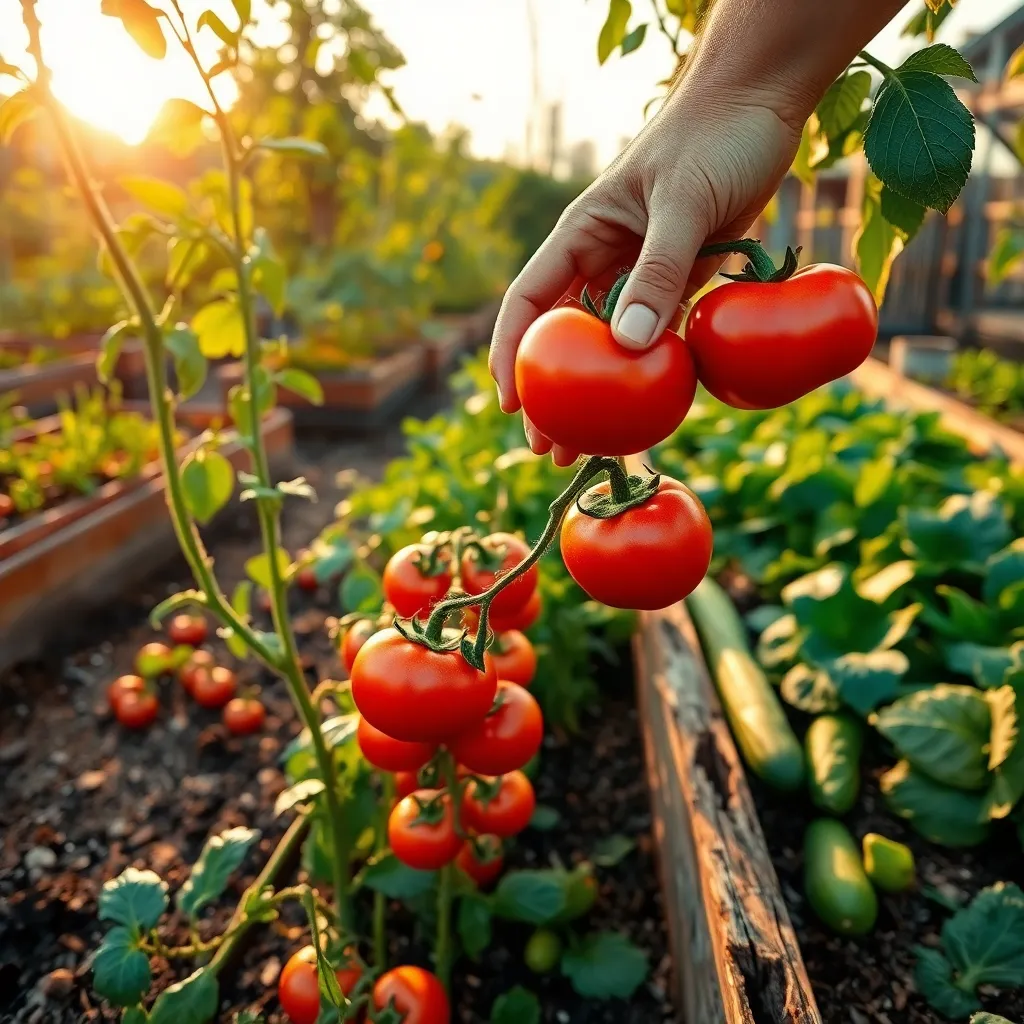
Harvesting vegetables at the right time is crucial for achieving optimal flavor. Vegetables such as tomatoes and bell peppers develop their full taste profile when picked at peak ripeness, which is often indicated by vibrant color and a slight softness to touch.
To enhance the flavor of root vegetables like carrots and beets, consider leaving them in the ground until after the first frost. The cooler temperatures convert starches into sugars, resulting in a sweeter taste.
Leafy greens, such as lettuce and spinach, should be harvested early in the morning when the leaves are crisp and full of moisture. This not only maximizes flavor but also reduces bitterness, providing a more enjoyable eating experience.
It’s important to use the right tools and techniques for harvesting to avoid damaging the plant. Use clean, sharp scissors or a knife to make precise cuts, ensuring the plant continues to produce vigorously.
- Tomatoes: Harvest when they are fully colored but still firm.
- Carrots: Wait for about 80 days after planting; the tops should be about an inch in diameter.
- Lettuce: Pick the outer leaves first to encourage the plant to continue growing.
Preventing Overgrowth and Plant Stress

When vegetables are left to grow unchecked, they can often become overgrown, which leads to plant stress. Overgrown plants may divert energy to maintaining excessive foliage rather than producing healthy, flavorful produce. Regular harvesting is key to preventing this overgrowth, ensuring that plants focus their energy on producing new fruits. By keeping your plants at a manageable size, you can also reduce the risk of disease and pest infestations, which often thrive in dense, tangled growth.
Implementing a consistent harvesting schedule can significantly reduce plant stress and improve overall yield. Begin by checking your plants daily, especially during peak growing seasons, and harvest ripe vegetables promptly. Use clean, sharp tools to make precise cuts, minimizing damage and stress to the plant. This practice not only helps to maintain plant health but also encourages the growth of new, healthy shoots and fruits.
For gardeners looking to take their skills to the next level, understanding specific plant needs is crucial. For example, tomatoes benefit from regular pruning to remove excess leaves and suckers, which promotes better air circulation and fruit development. Similarly, lettuces and leafy greens can be harvested using a “cut and come again” approach, which involves trimming the outer leaves only. This method encourages continuous growth while preventing the plant from bolting prematurely.
Ensuring plants have the right growing conditions can also mitigate stress and overgrowth issues. Most vegetables thrive in well-draining soil rich in organic matter, which helps maintain the balance between moisture retention and drainage. Watering deeply but infrequently encourages roots to grow deeper, supporting healthier plants that are more resilient to stress. By focusing on these fundamental practices, gardeners can enjoy bountiful harvests and healthier plants.
Promoting Continuous Vegetable Production
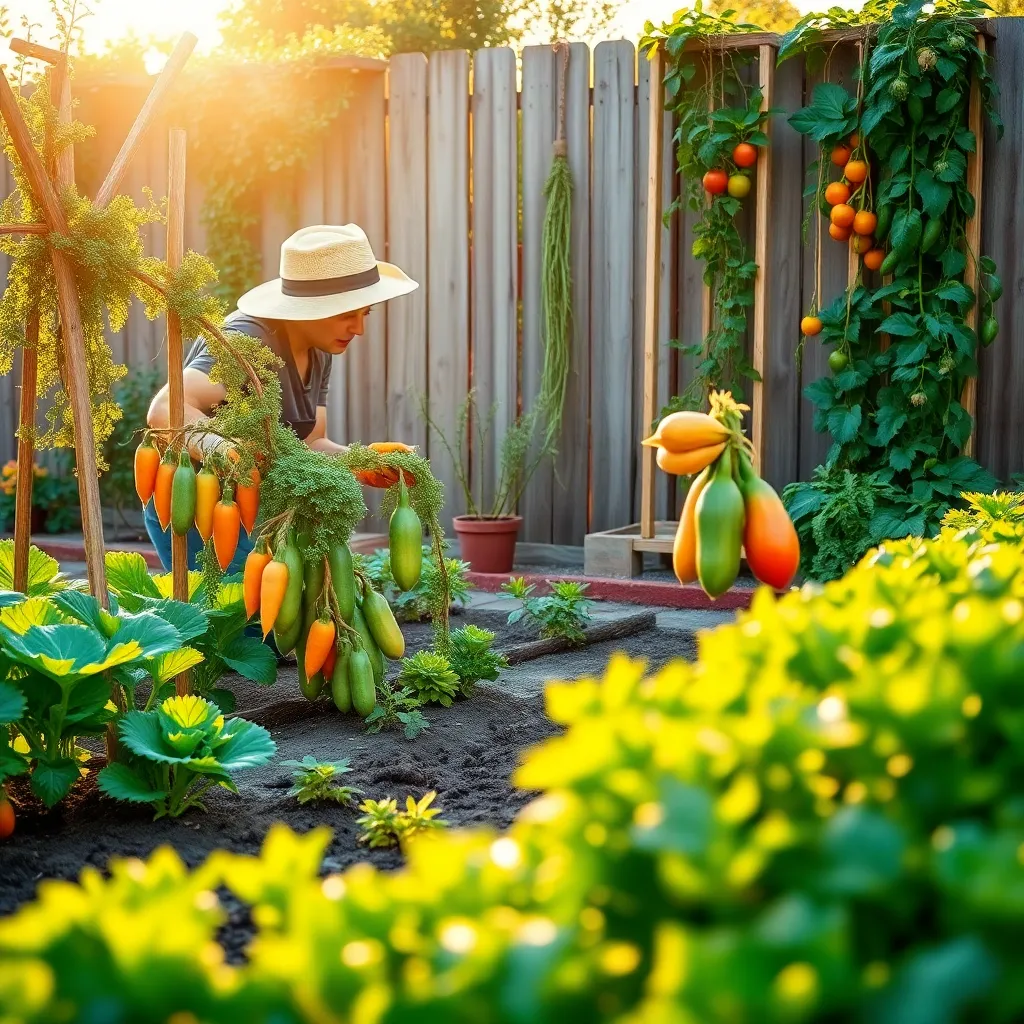
Harvesting vegetables regularly encourages plants to keep producing, which leads to a longer harvest season. By picking crops like beans, tomatoes, and cucumbers at their peak, you stimulate further flowering and fruiting, ensuring a continuous supply.
To promote sustained production, it’s essential to provide consistent care to your vegetable plants. Maintain optimal soil conditions by ensuring it is rich in organic matter, well-drained, and slightly acidic to neutral, ideally with a pH of 6.0 to 7.0.
Watering plays a crucial role in aiding continuous production. Vegetables generally require about one inch of water per week, so ensure your garden receives adequate moisture, especially during dry spells.
For advanced gardeners, implementing succession planting can further enhance continuous production. By planting new seeds every two to three weeks, especially fast-growing crops like lettuce and radishes, you can maintain a steady harvest throughout the growing season.
Conclusion: Growing Success with These Plants
In conclusion, cultivating a thriving relationship is much like harvesting vegetables; it requires attention, care, and a nurturing environment. Firstly, we explored the importance of regular communication, akin to consistently watering your garden. Secondly, the need for patience and understanding was highlighted, just as plants need time to grow. Thirdly, embracing change and adaptability was emphasized, much like adapting to seasonal shifts in gardening. Fourthly, maintaining a sense of humor and joy was likened to the unexpected delights found in a flourishing garden. Finally, the significance of shared goals and teamwork was underscored, paralleling the collaborative effort of tending to a communal garden.
As an actionable next step, take a moment today to reflect on these concepts with your partner, discussing how you might apply them to nurture your relationship further. Remember, every small action contributes to a bountiful harvest.
Don’t forget to bookmark this article as a handy resource, ensuring these insights are always within reach when you need a quick reminder. As you implement these strategies, look forward to a future where your relationship thrives, blossoming into its own unique garden of connection and love. Your journey to a fruitful partnership starts now—let’s make it a success!

